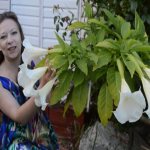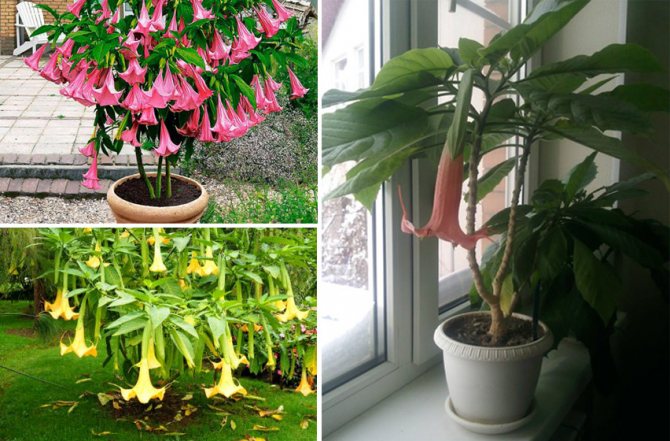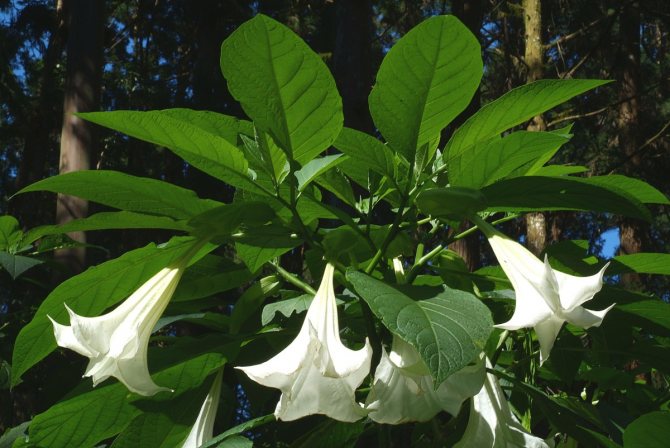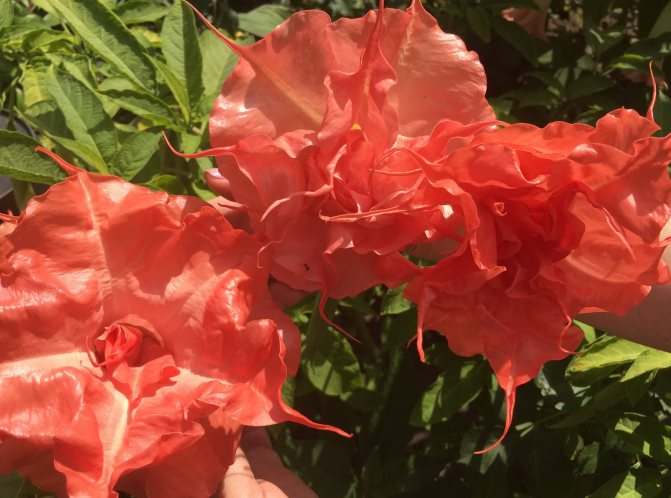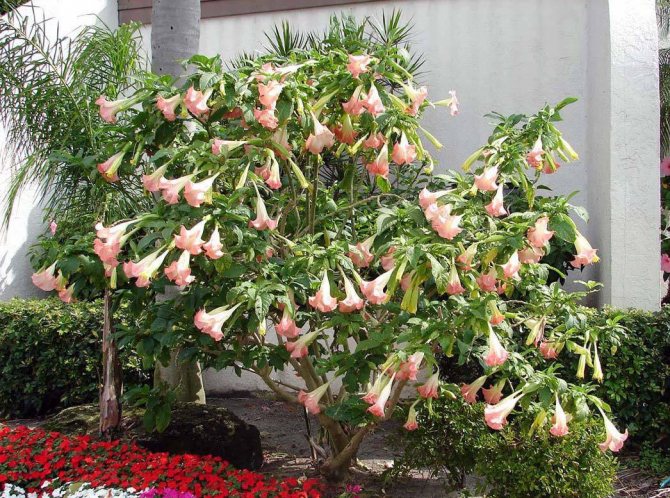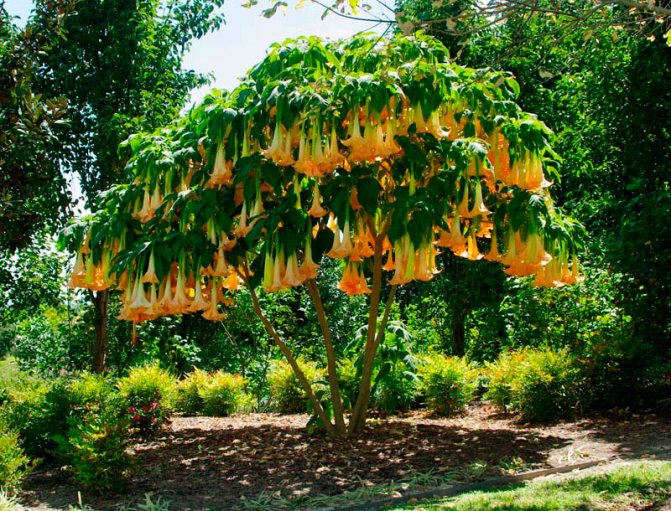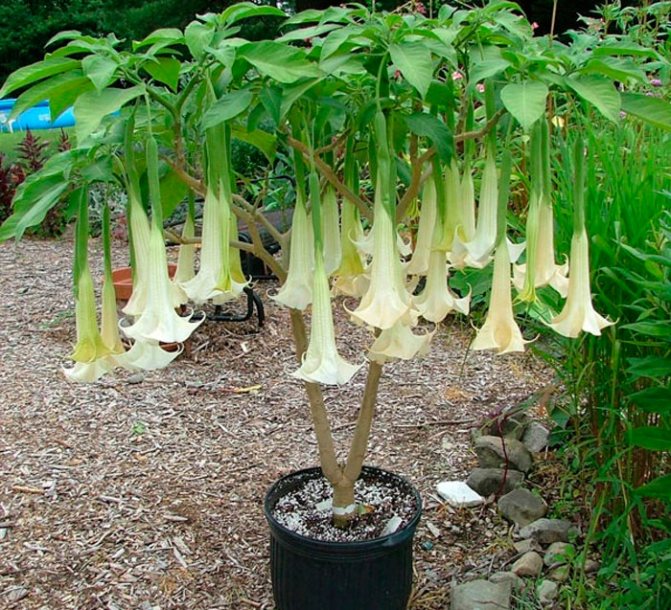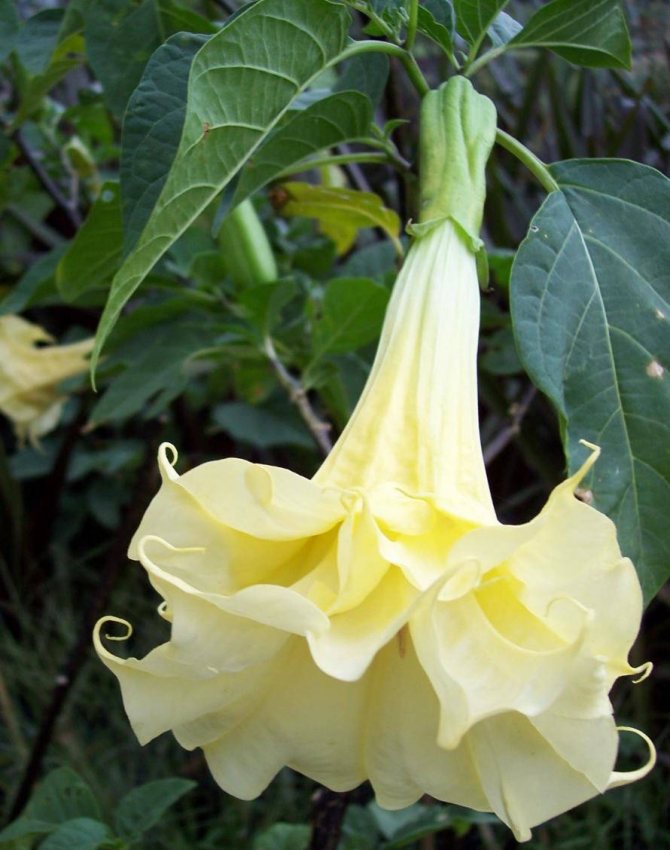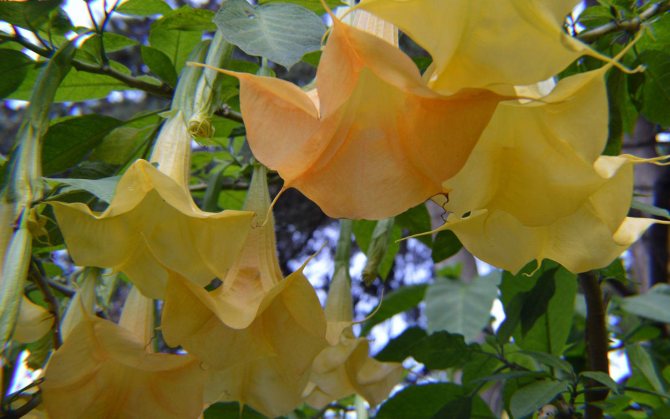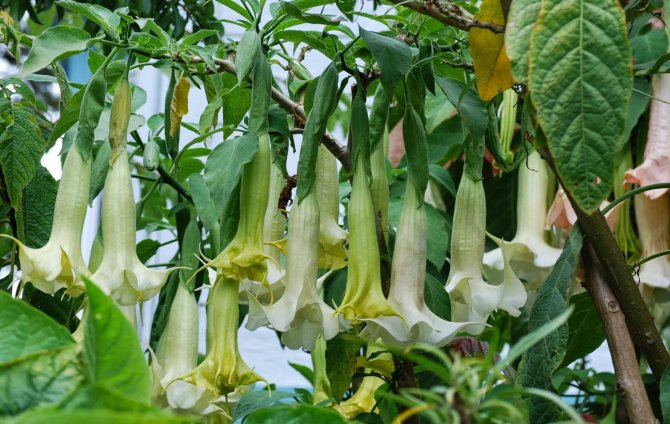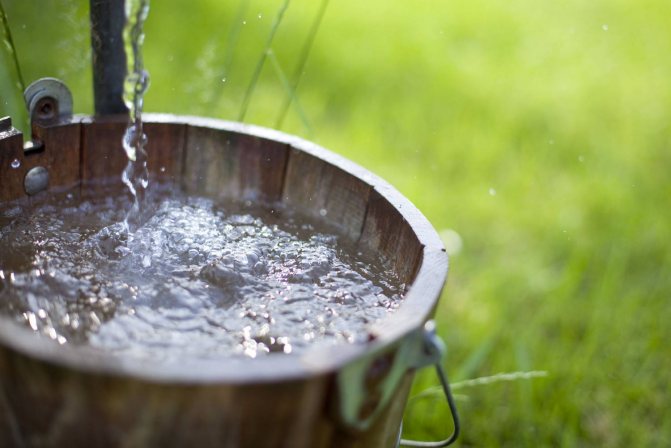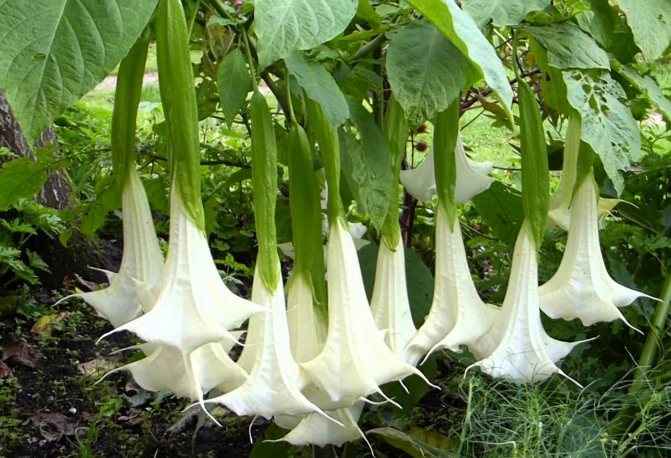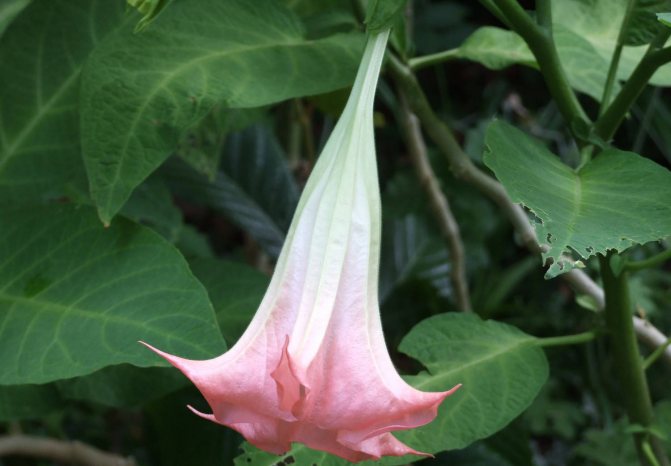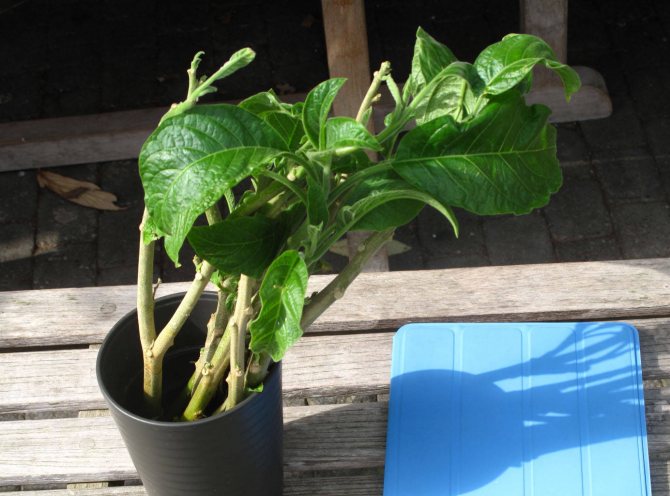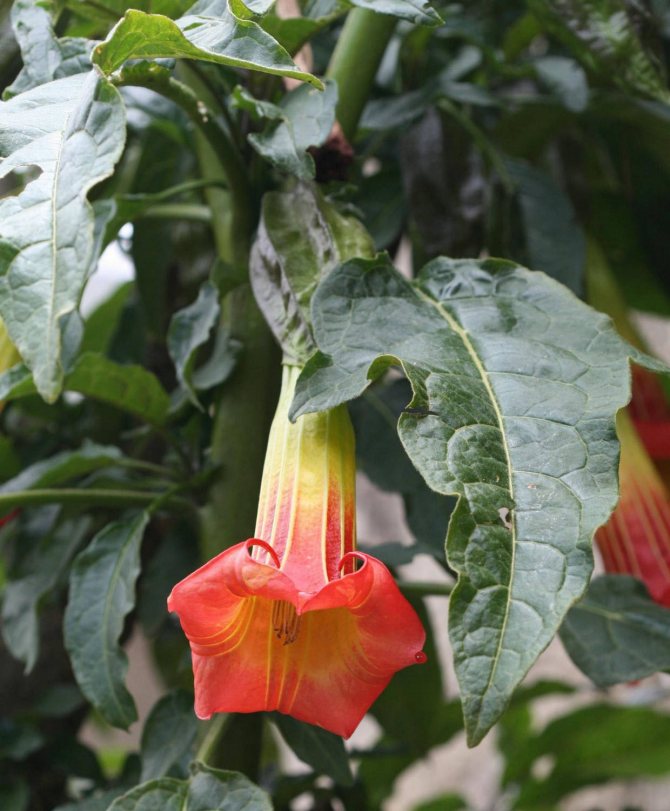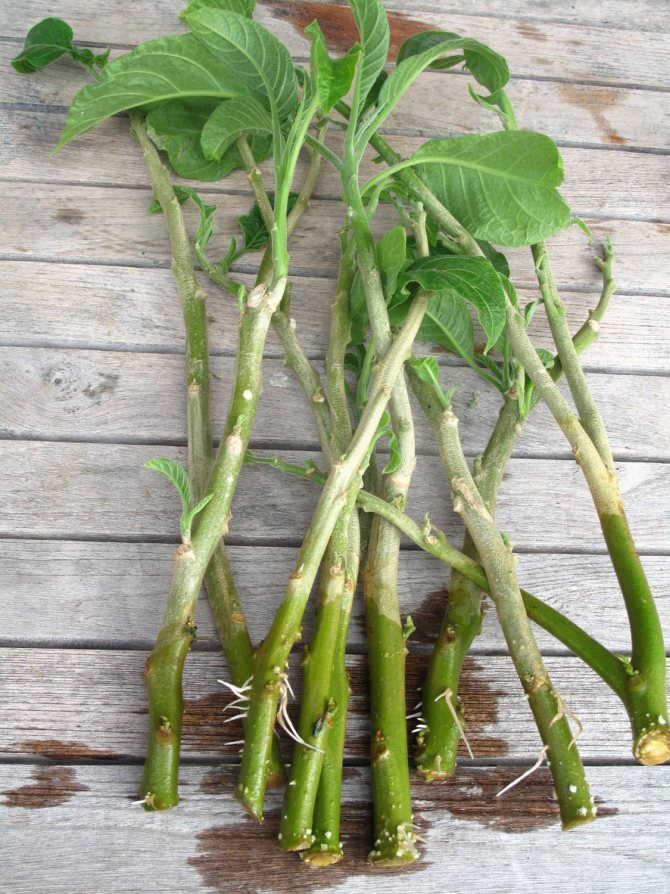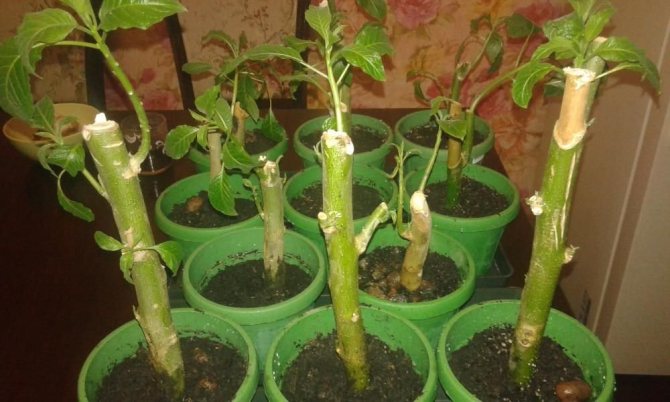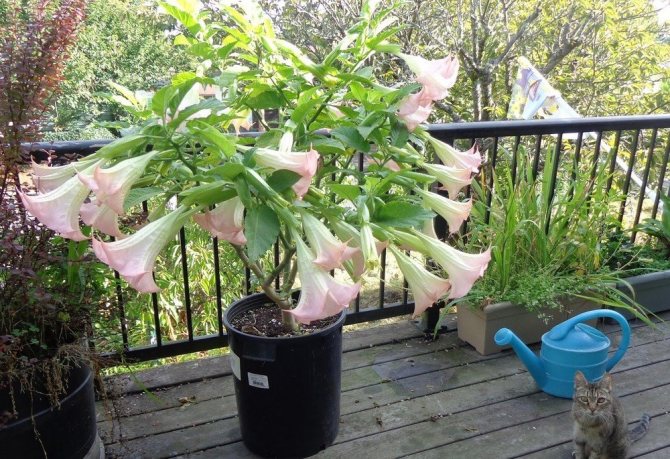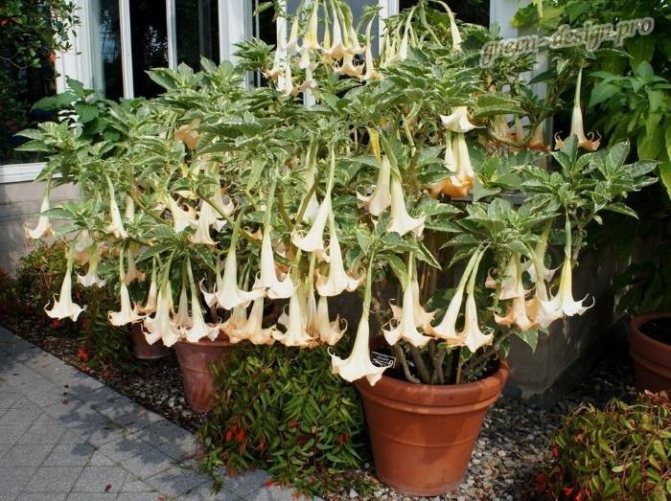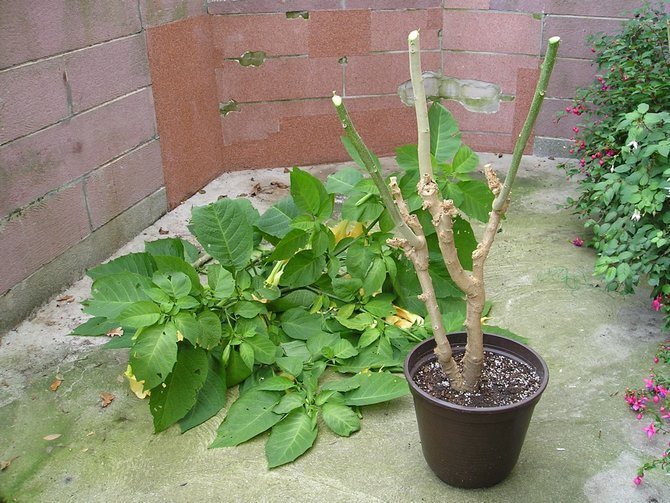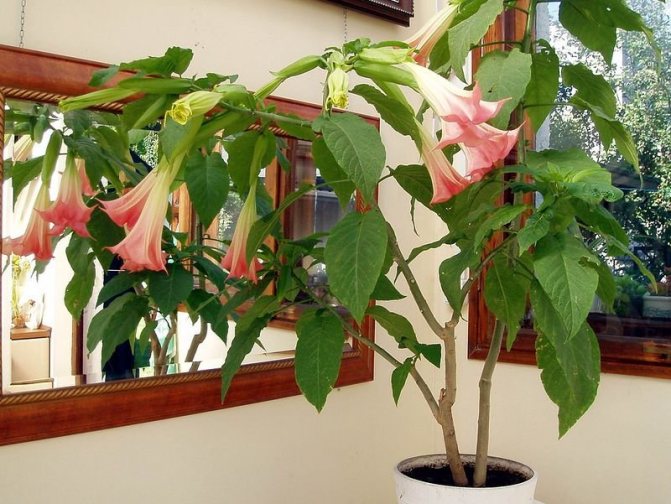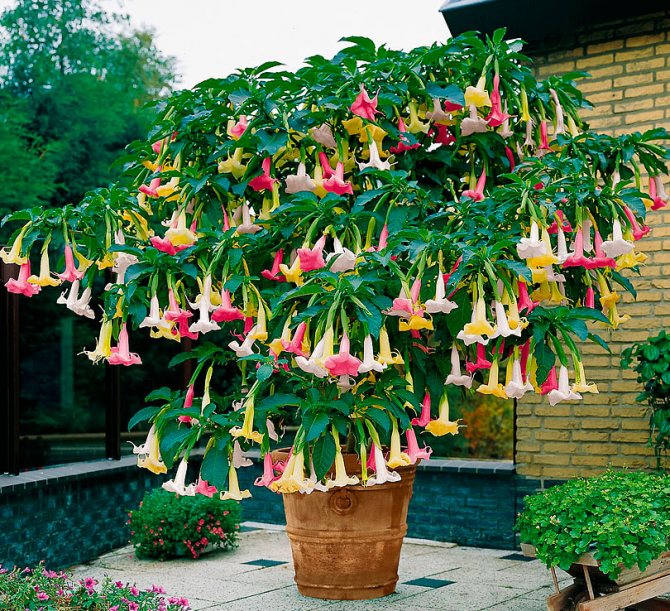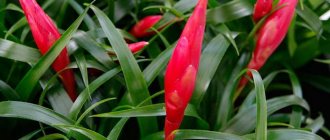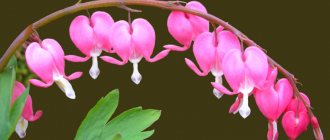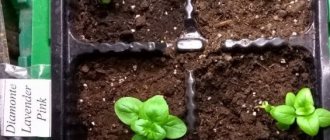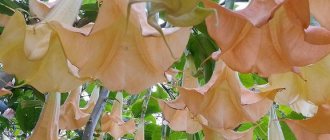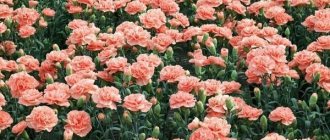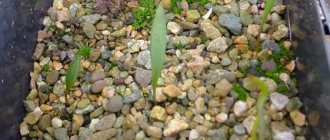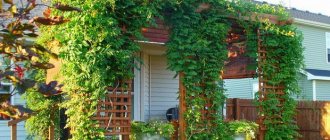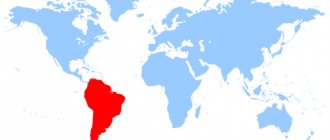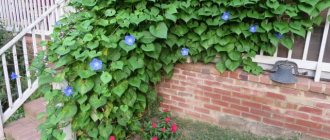A tropical tree growing up to 10 meters amazes with its fabulous beauty and flowers up to 0.5 meters long. In fact, Brugmansia is a kind of dope. She retained poisonous substances in her juice. On the territory of Eurasia with cold winters, an ornamental plant has to be hidden from frost, some species grow up to only 2 meters. With proper care, it blooms for a long time. You can grow it in the garden and apartment.
Description of the plant
Brugmansia is a climbing plant with long stems arranged in turn.
The leaves have a green tint, an oblong shape, in some varieties the foliage is jagged at the edges. In length, they are capable of reaching 30 cm.
In the summer, buds form on the branches. During the flowering period, they bloom, resulting in the appearance of flowers of white, pinkish, yellow color.
They have a tubular appearance, they are quite long, they emit a strong aroma, which they literally fill the room with.
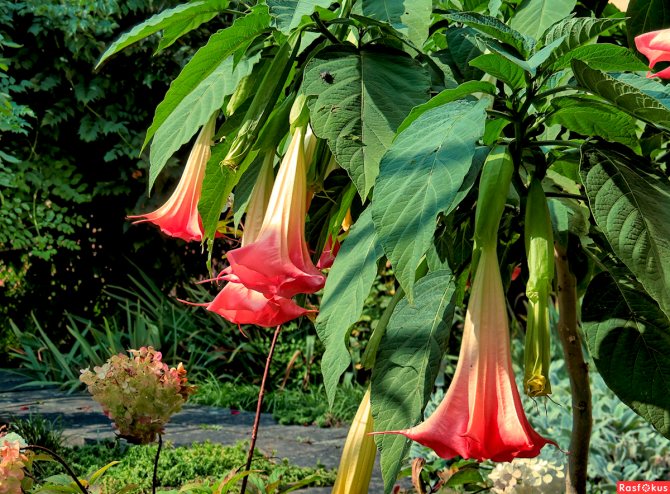
The aroma of brugmansia is strong and persistent
Growing from seeds
Too dense seeds must be soaked in warm water for a day, it is advisable to add a little root formation stimulator. Before soaking, lightly scratch the seed to break the cover of the seed, germination will occur faster.
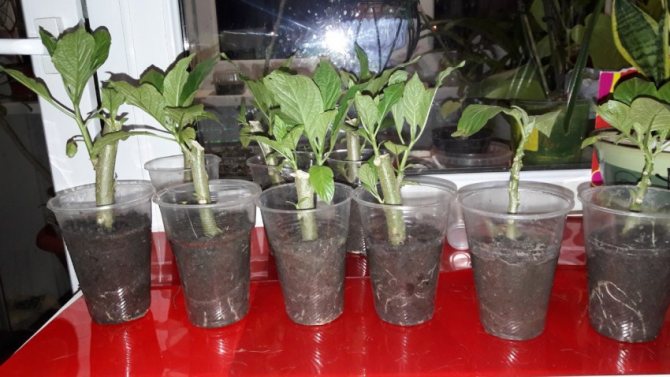

For planting, take garden soil, it is light and neutral. The seed is placed in the ground to a depth of no more than a centimeter.
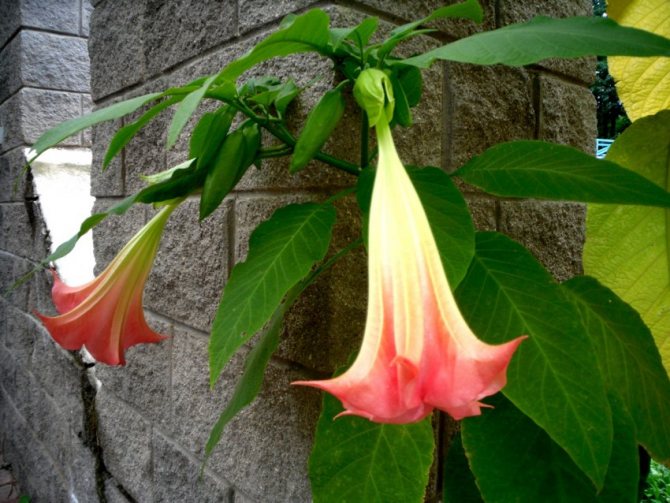

An important condition for the emergence of seedlings is humidity and heat, so create greenhouse conditions with a temperature within 28⁰С. Seeds are sown from January to March.
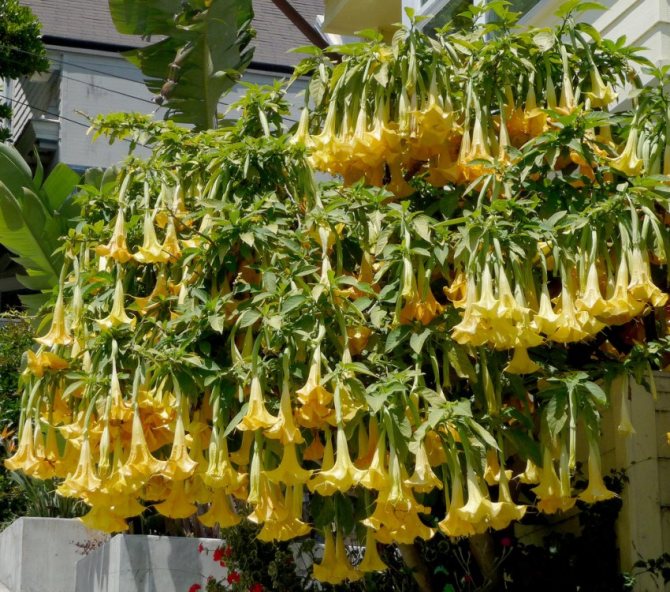

A month later, with the appearance of the first shoots, the main requirement must be met - good lighting. With this breeding method, brugmansia will bloom for 2-3 years of life. You will need to repot the flower several times in the first year as the root system grows.
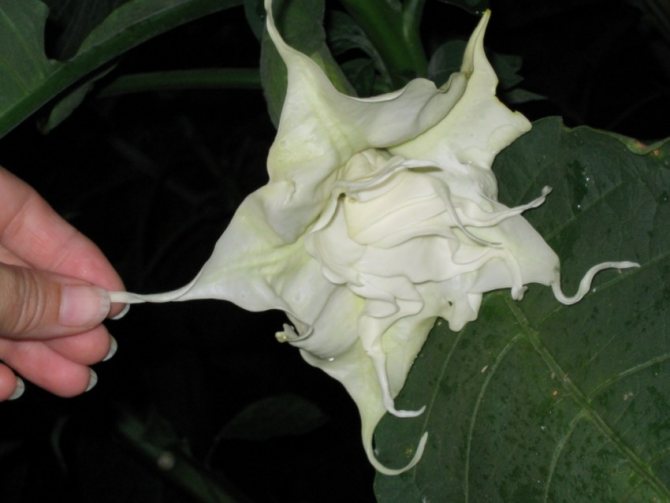

The plant is transplanted in early spring. Often limited to changing the topsoil. Use drainage to protect the roots from decay.
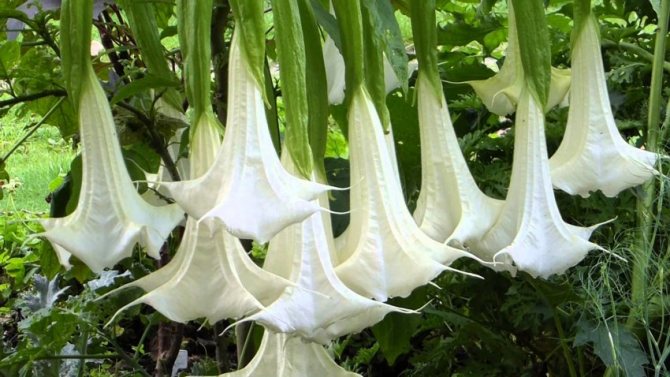

Poisonous properties
Brugmansia is distinguished by its poisonous properties, because of which it can harm human health. Therefore, it is important to wear gloves when working with it.
If the plant is grown at home or in the garden, you need to choose a place where none of the family members can accidentally touch it.
It is important to keep the flower away from small children and pets, which cannot be explained the danger of contact with this crop.
Even the smallest piece of grass that gets into the body of a person or an animal causes severe poisoning, up to and including death.
The danger arises due to the fact that the plant contains toxic substances, namely atropine, scopolamine and hyoscyamine.
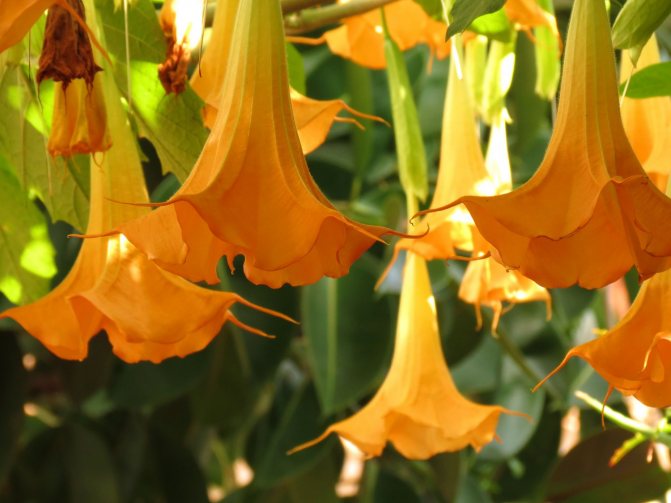

Brugmansia is a very poisonous plant
If you want to buy a brugmansia flower
If all the warnings have been taken into account, and no difficulties scare you, go to a specialty store for a strong and healthy brugmansia. If you want to shape the plant according to your goals, design tastes and preferences, get a young small specimen. A rooted stalk will cost you 300-600 rubles.
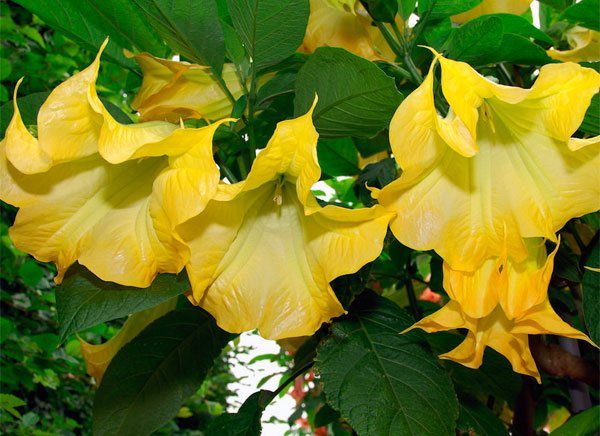

In the event that you just want to decorate your interior with "angel pipes", buy an adult and large copy right away.Although, of course, its price will be higher: from 600 to 1000 rubles.
Brugmansia can be purchased from hands much cheaper: for 250 rubles, and in rare cases its price can be only 50 rubles. But in this case, you will probably have to correct all the mistakes of the previous owner.
Examine the selected plant carefully. It should be free of any damage and suspicious extraneous phenomena: spots, wet areas, dry tips on the leaves, etc. There should be no signs of wilting or traces of pests (as well as themselves, of course).
Even if you are sure that you have had a good look at the plant in the store, it is recommended to quarantine a newly acquired specimen for several weeks.
Photos from this article will help you take care of the cyclamen flower at home.
Here we will tell you what you need to consider if you want to buy cyclamen seeds.
And why the cyclamen does not bloom, read here.
Types of brugmansia
Brugmansia is of several types, each of which has its own characteristics. Despite the many species, each of them is poisonous.
Bloody
This variety can grow up to 14 m. Its flowers are orange in color, and the border is a rich red hue.
The species is characterized by the absence of odor, therefore, unlike other relatives, it does not attract the attention of insects that are engaged in pollination.
The bloody variety tolerates low temperatures well, but with short-term exposure. Now such a flower is only cultivated, it is not left in the wild.
Popular in gardening species and varieties
Brugmansia aurea - a tree that in nature can reach 6 meters, but in pots its growth is limited to 2 meters. Flowers in golden or cream shades.
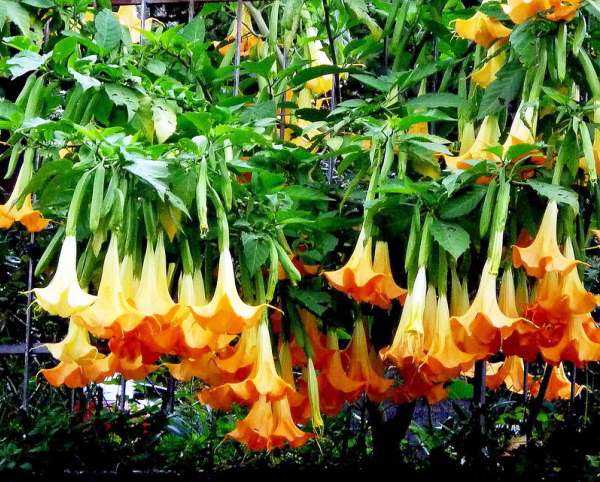

Brugmansia snow-white (Brugmansia candida) - grows up to 4.5 m in height. It is an interspecific hybrid with white, slightly pink or cream flowers, intensely aromatic in the evenings. Varieties: "White Angel", terry form "Adretta", mini bush "Wooly White".
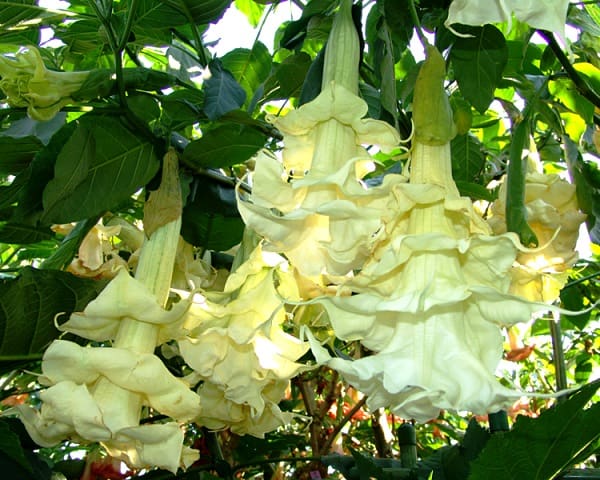

Fragrant Brugmansia (Brugmansia suaveolens)... One of the most popular species, which attracts with a variety of varietal forms, hybrids and a heady aroma of flowers of yellow, pink, cream and white colors. The most spectacular variety "Tricolor" with a unique combination of flowers of different colors. "Ambizu" is a dwarf form of a bush with a yellow flowering, pink brugmansia "Aromagia pink".
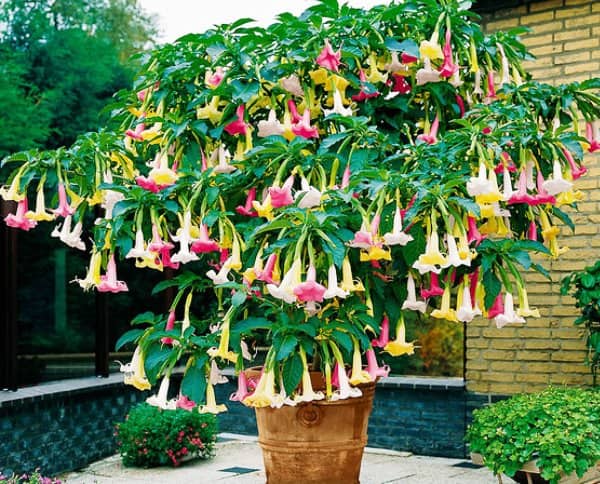

grade "Tricolor"
Many terry hybrids can be found on sale, for example, Angels Innovation, Angels Suprise, Angels Sunexplosion, Rosa Zauber, Miss October, Bolero, ANGELS ENJOY, Edna. The unique hybrid form of Brugmansia cubensis amazes with its unusual flower corolla shape.
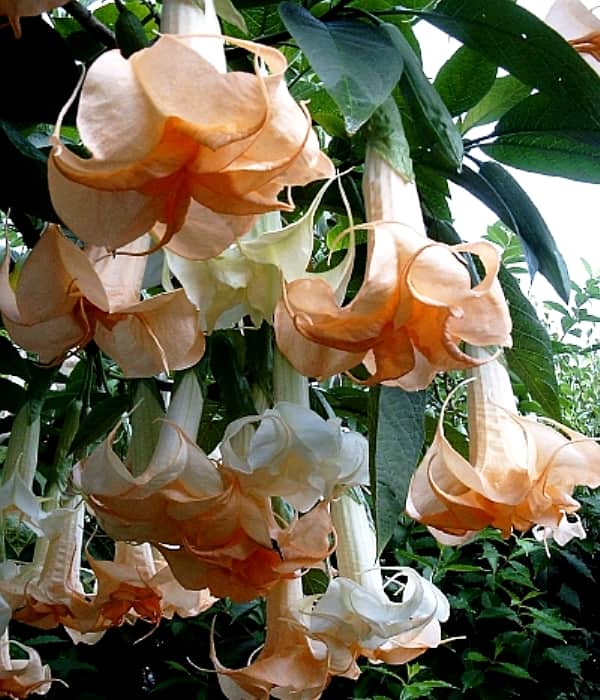

There are also decorative deciduous varieties of the Variegata group: Maya, Snowbank, Sublime, Sunset, Apricot Queen.
Landing in open ground
Brugmansia can be grown not only indoors, but also in garden plots. Before landing, you should choose the best place.
It is best to grow a crop in soil consisting of soil, turf, leaf humus, peat.
To improve drainage, river sand is added to the soil. There are no special requirements for acidity, but it is still better to avoid excessive acidity.
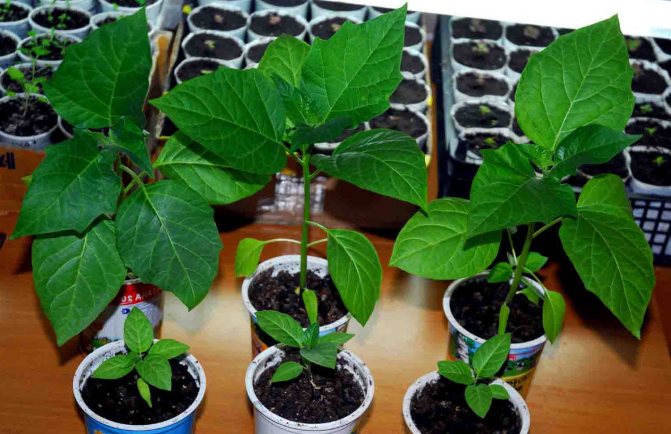

Preparation for planting in the ground
If you make the soil fertile, the flower will thank you with luxurious greenery and beautiful abundant flowering.
Planting in open ground is done in spring, when the frost is completely finished. The place should be well protected from strong winds, but sufficiently illuminated. Exposure to direct sun in the morning and evening is especially important.
Before planting, the soil is dug up, weeds are removed, and depressions are made. Organic and mineral fertilizers designed specifically for flowers and containing a lot of phosphorus and potassium are applied to the soil with which the pits will be filled.
A distance of 1.5 m is maintained between the depressions. After all, the plant reaches a large size, therefore, when planting next to it, the bushes can interfere with each other.
At the bottom of the pits, a drainage layer is placed with the addition of organic feeding. Then the plant is placed in a hole and covered with prepared soil, after which it is watered abundantly. A layer of mulch is poured on top, which can be sawdust, straw, dried grass.
Pests and diseases of brugmansia
In open field conditions, the plant suffers from the invasion of aphids, whiteflies and spider mites, therefore, it is necessary to regularly examine the internodes, the lower part and the axils of the leaves.
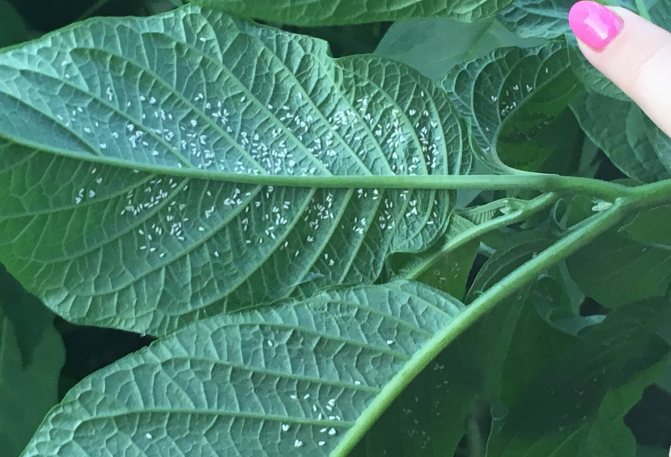

In case of detection of pests, the affected brugmansia should be treated with biological products or insecticides of systemic action, for example, spray with Bioreid, Actellik, Fitoverm, Bio Insect, Plant Spray, in case of severe damage - Anti-tick quadro or similar in composition.
During the dormant period, if the plant is stored not in a dry, but in a damp room with low temperatures, the waterlogged brugmansia become covered with gray rot spots.
Treatment with an appropriate fungicide, for example, Topaz, will come to the rescue.
Sometimes, fortunately, not too often, various specks of indeterminate color and intensity appear on the leaves, the strokes are long and very short, the leaf plates curl or simply deform in an unnatural way.
Without a doubt, brugmansia is affected by one of the viral diseases that cannot be cured.
All that remains is to destroy the plant so that other specimens of the garden collection do not become infected.
Brugmansia care at home
For the full growth and development of brugmansia, it is important to know what conditions are required to be created at home.
Illumination
To grow brugmansia, it is necessary to provide it with good lighting. Such a place as a window or balcony, flooded with rays of sunshine, is perfect for her.
The flower needs to be exposed to direct sunlight at least 4 hours a day.
But in summer and spring, with excessive sun activity, it is still worth shading the plant.
Optimum temperature
The culture in question requires a temperature of 18-27 degrees.
If the room is less than 13 degrees, the flower will slow down its development.
After all brugmansia is a tropical plant that does not tolerate cold. In winter, when the flower is resting, the lowest possible temperature is 5-7 degrees above Celsius.
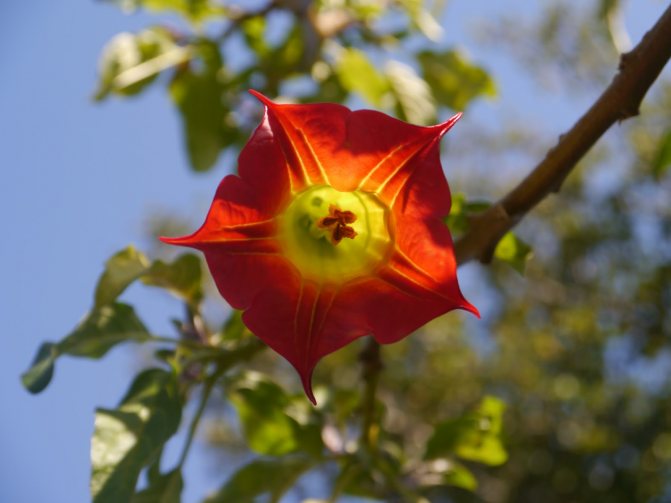

Brugmansia loves a warm climate
Top dressing
Brugmansia develops better if it has enough nutrients. Therefore, it must be fertilized periodically - once every 14 days from spring to autumn. This requires the purchase of a liquid mineral supplement.
Nitrogen fertilizers are applied to accelerate the set of green mass, phosphorus fertilizers - for the formation of buds.
In the fall, the concentration of dressings is reduced, in the winter, they are stopped altogether, and in the spring they start the procedures again when new shoots appear.
In addition to nitrogen and phosphorus, humus and manure can be used.
Before fertilizing, be sure to water the soil to keep it moist.


Brugmansia needs nutrients for full growth and flowering
Transfer
Transplant the plant as it grows. Several transplants are possible during the season, as the flower grows quite quickly. At each transplant, choose a capacity larger than the previous one.
The earth ball on the root system should not be damaged.
When transplanting, fertilizer of a mineral type or chicken droppings must be applied.
Reproduction methods
Brugmansia is propagated by seeds and by cuttings. The most preferred method is considered to be cuttings of the culture. The fact is that the plant takes root better this way, grows faster and retains the properties inherent in the parent.
Having planted the seeds, it will be possible to see the first flowers only after a few years.
Cut the cuttings at least 15 cm long. Large sheets are cut off from them, then the plant is sent to a container with water so that it takes root. When roots appear, the cutting is planted in the soil.
Reproduction methods
Brungmansia is propagated mainly by cuttings, but sometimes seeds are also used.
Cuttings
Propagation by cuttings is used in autumn or spring:
- Cut off young, but lignified stems with a growing point, with 2-3 buds, the leaves are removed.
- The container is taken opaque, water with soluble coal is poured, planting material is placed.
- They create illumination and temperature - +20 ° C.
- When roots appear (2 weeks), they are seated in separate pots.
- The soil is taken loose, breathable, consisting of peat, perlite, sand 2: 1: 1.
Seeds
Growing from seeds is a difficult and time-consuming process, and the properties of the variety may not be preserved.
- Planted in the first months of winter or early spring.
- For better germination, the seeds are kept in Kornevin.
- The container is taken with light soil, the planting material is distributed there, deepening by 0.5-1 mm, and moistened.
- Cover with a transparent lid (glass, polyethylene).
- Provides + 20 ... + 25 ° C, good lighting.
- After emergence, after 2 weeks, the film is removed.
- Crops are sprayed with settled warm water at least 2 times a day, trying not to flood.
- When the fifth leaf appears, the seedlings are planted.

